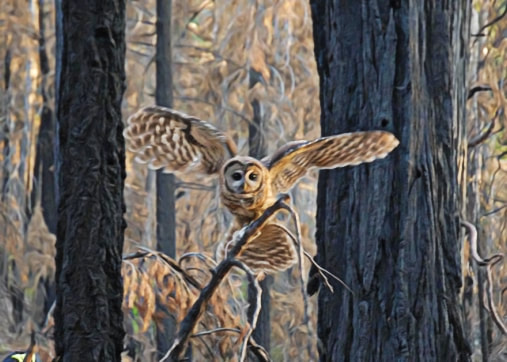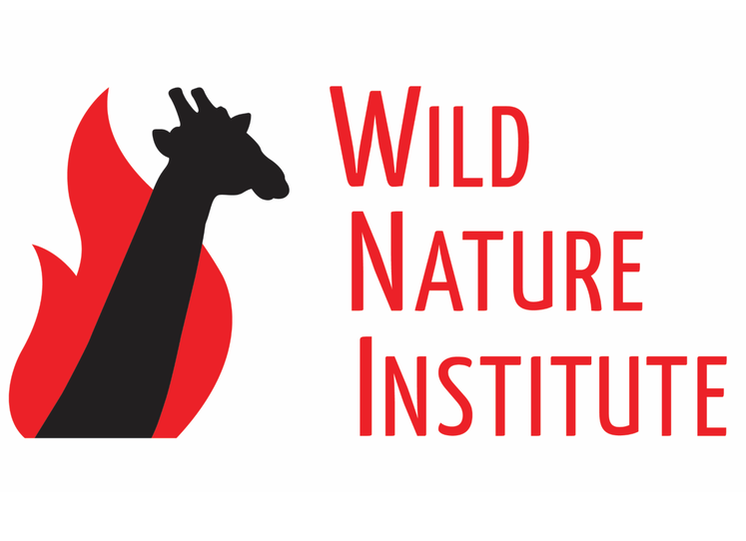|
Wildfire Management Designed to Protect Spotted Owls May Be Outdated
24 July 2018 Forest fires are not a serious threat to populations of Spotted Owls, contrary to current perceptions and forest management strategies. According to a new study, mixed-severity fires actually are good for Spotted Owl populations, producing more benefits than costs to the species, which acts as an indicator of biological health to the old-growth forests where they live. The study, which analyzed all 21 published scientific studies about the effects of wildfires on Spotted Owls, appears July 24 in the journal Ecosphere and suggests that management strategies for this species are outdated. “Current management strategies targeted at protecting Spotted Owls are prioritizing what is called fuel-reduction logging, which removes trees and other vegetation in a misguided and ineffectual attempt to reduce the severity of future fires,” said Derek E. Lee, associate research professor of biology at Penn State and author of the paper. “But this tactic removes canopy cover and large trees that are important for Spotted Owls and does not generally reduce fire severity of big, hot fires. The idea behind these logging projects is that the risks from wildfire outweigh the harm caused by additional logging, but here we show that forest fires are not a serious threat to owl populations and in most instances are even beneficial. This reveals an urgent need to re-evaluate our forest management strategies.” Spotted Owls are found in old-growth forests in the western United States and act as an indicator species, a measure of the biological health of an area, for public-land management. This species is particularly sensitive to logging, and when the northern subspecies of Spotted Owl was listed in 1990 as threatened -- likely to become endangered in the foreseeable future -- under the federal Endangered Species Act, about 90% of America’s old-growth forest had already been lost to unsustainable logging practices over the previous 50 years. The listing of the Northern and Mexican Spotted Owls as threatened drew national attention to the dramatic decline of old-growth forest ecosystems and forced policy changes in the management of national forests. In spite of these protections, populations of Spotted Owls have continued to decline outside of national forests over the last 38 years. Although many believe that wildfire has significantly contributed to this decline, there is little scientific basis for this assumption. “Much of what we knew about the Spotted Owl’s habitat preferences was derived from studies in areas that had not recently experienced fire,” said Lee. “I analyzed all available published studies investigating the effects of forest fires on Spotted Owls. I also considered the influence of fire severity. Forest fires in the western United States typically burn as mixed-severity fires that include substantial patches of low-, moderate-, and high-severity fire.” The new study shows that mixed-severity fires do not have any significantly negative effects on the owls’ choice of foraging habitat, survival, occupancy, reproduction, or recruitment. Although mixed-severity fires may lead to reduced occupancy -- the probability that certain sites are occupied by owls -- in burned areas, this reduction is less than is typically seen due to normal movement of the owls in unburned habitat, and is much less than what is observed in response to logging. Additionally, the risk of fire occurring in spotted owl breeding sites is very small: only 1 percent of breeding sites are affected by mixed-severity fires each year. Mixed-severity fires have a positive impact on the owls’ choice of foraging habitat, on the number of owls that are recruited to the area immediately after a fire, and on reproduction. High-severity fires, including those that burn 100 percent of an area, are also positively associated with reproduction. This indicates that even the most intense fires can have positive outcomes for Spotted Owls. “These positive effects indicate that the mixed-severity fires of recent decades, including so-called megafires that have been receiving lots of media attention lately, are within the natural range of variability for these forests,” said Lee. “The fact that Spotted Owls are adapted to these types of fires tells us that they have seen this before and learned to take advantage of it.” Together, these results suggest that, contrary to current perceptions, forest fires do not appear to be a serious threat to owl populations, and may impart more benefits than costs for Spotted Owls. Therefore, fuel-reduction logging treatments intended to mitigate fire severity in Spotted Owl habitat may in fact do more harm than good. “Spotted Owls were once a symbol of the biodiversity found in old-growth forests,” said Lee. “We need to reevaluate our management strategies to better protect these birds and the extraordinary biodiversity found in severely burned forests.” Contacts: Derek E. Lee: [email protected], (415) 763-0348 Gail McCormick: [email protected], (814) 863-0901
0 Comments
Your comment will be posted after it is approved.
Leave a Reply. |
Science News and Updates From the Field from Wild Nature Institute.
All Photos on This Blog are Available as Frame-worthy Prints to Thank Our Generous Donors.
Email Us for Details of this Offer. Archives
July 2024
|
|
Mailing Address:
Wild Nature Institute PO Box 44 Weaverville, NC 28787 Phone: +1 415 763 0348 Email: [email protected] |
|


 RSS Feed
RSS Feed
